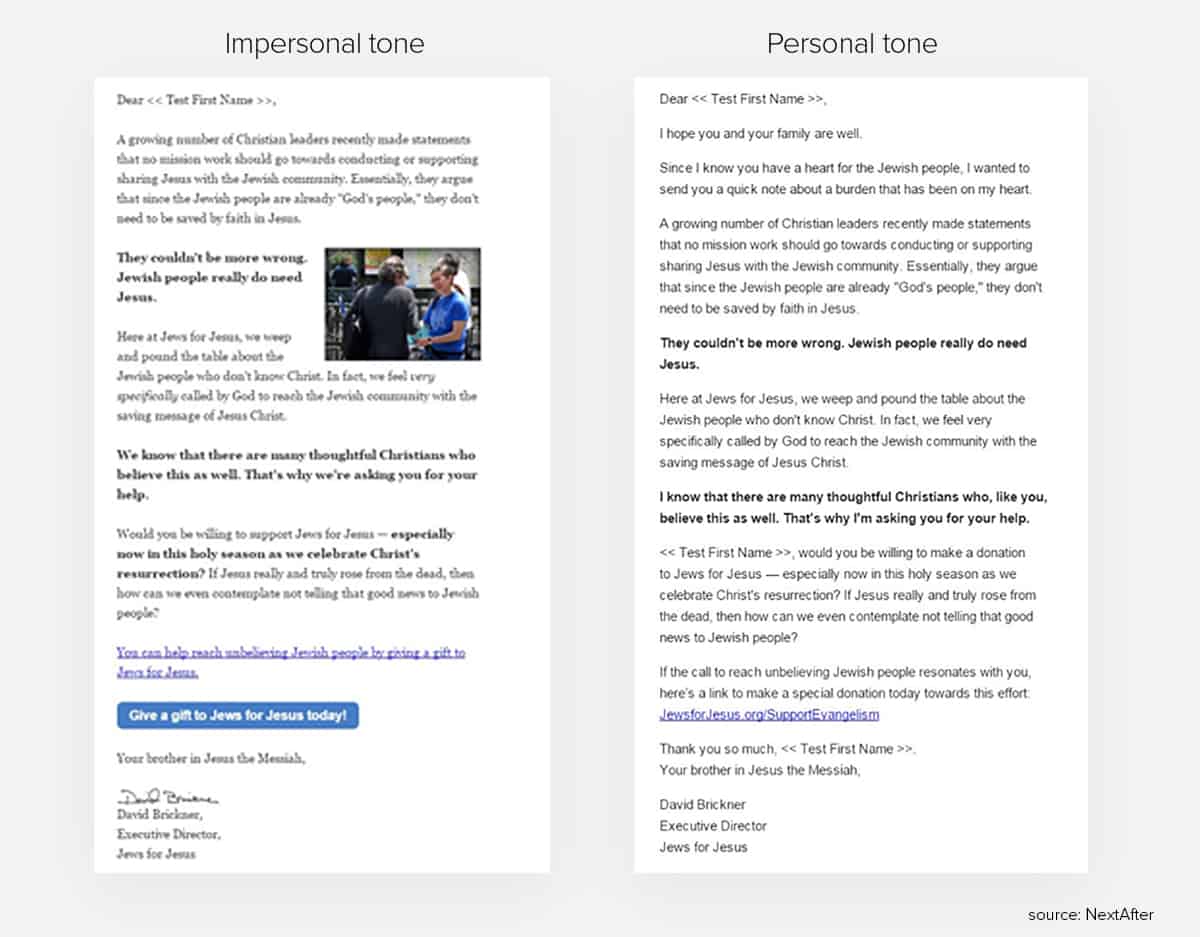5 Steps to Creating a Powerful Donor Email

It’s difficult to grow without a powerful email vision in your portfolio. Email continues to prove its usefulness, and meets your donors where they’re headed: the digital world.
This blog will attempt to provide you with 5 steps to creating a powerful email. This could reach your donor anywhere on their journey. Maybe you send an email welcome series to someone who downloaded some content of yours. Perhaps you direct people to a landing page from a content email. Or maybe you’ve done all that, and now you’re ready to test out some new suggestions in making your subject lines or email content better.
Our 5 steps provide great tips for any email campaign you’re getting ready to send!
1. Organize your data
Getting all donor data organized into a nonprofit CRM solution is essential, especially if you’re reaching out to 100 people or more. It’s simply too much to handle from scratch. Once all your data is in one place you can simply segment your donors in a way that will help you spot specific groups like. A few ideas of how to segment:
Prospective donors
One-time donors
Recurring donors
Location / demographics
It will be important to approach each of these groups with a different kind of message in your marketing email. If you have thousands of people to organize, you may want to subdivide these groups even further, getting more specific. The more targeted and specific, the better your responses will be!
2. Write like a person, not an organization
Donations are not sales. It’s true that trust can be built with organizations, which can in turn lead to sales.
Yet researchers have found the opposite when it comes to nonprofits.
The kind researchers over at NextAfter have found that donors want real relationships with real people (or at least virtually-real people). The more organization-centric it is, the less likely people will donate.
So, how do you make a nonprofit email sound like a person? Focus on relationship building.
- Relationships create trust.
Trust is what needs to exist for someone to give. If they don’t trust the nonprofit or the person, then how can they trust where their donation will go? Relationships are built when the tone, person, and story sound believable.
Here’s an example of how changing copy from an impersonal, new-telling voice to a personal, friendly voice improved click-through and donation conversion.

2. Start the relationship with subject and sender
This is a real thing: a more personal subject and sender raises open rates. Changing the sender from the org name to a person’s name showed a 6% increase in opens in this study. Have you gotten the message yet? Make it personal!
3. Write a catchy subject line
According to a study done by MailChimp, the average nonprofit email open rate is 24.98%. That may seem low, but when you think about it, most people have more email than they have time for!
This is what makes an email subject line so important. It may be the only part of your email a potential donor reads – so you need to make it impactful.
The best subject lines are direct (no flowery language), short (readable on your smartphone), and customized to your audience (e.g. adding information such as donor location).
You can also test things like adding personalization (their first name) or adding an emoji to your subject lines. See more testing ideas and tips here.
4. Include a call-to-action
Once you have their attention with your catchy subject line, and you’ve built their trust, you need to determine what action you want your donors to take. Do you want them to donate? Volunteer? Attend an event?
Including a “call-to-action” within your email is critical for its success.
A “call-to-action” (or a “CTA”) can be a button or link at the end of your email that gets the reader to take a next action. Make these buttons in a contrasting color from the rest of your email so they stand out. The best CTAs include very direct wording, like “Donate Now” or “Sign Up”. You want your donors to clearly know how they should respond to your email.
Quick tip: test the location and quantity of your call-to-action buttons. Try placing one in the middle of you email after a compelling story. Try placing one in the upper right corner, in addition to below the signature. See what placement and quantity works best for your audience. And then? Keep testing!
Download our complete guide to testing here.
5. Always know the why
Like we said earlier in this blog, people have more email than they have time for. This fact alone means it’s important for your organization to be intentional when contacting donors. No one likes spam mail, so don’t send spammy emails!
Your emails should leave your donors feeling excited about your organization and mission. Examples of this include success stories (demonstrating the impact of your organization), upcoming events (that your donors could attend), or major organizational changes (your nonprofit just added a new board member or established a new partnership).
Effective nonprofit emails can have a huge impact on revenue for your organization. A study in the UK confirmed the need for the tech-facelift, showing that the return on investment for emails is $38 to every $1 spent.
If you feel like you’ve been spinning your wheels, sending emails without any response or uptick in donations, fear not! By following these steps, you’ll be cranking out high-performing emails in no time.
Schedule a live demo with our partner Bloomerang, and we’ll show you how easy it is to create and automate reports, utilize online and offline fundraising tools, quickly integrate and access all your data, and ultimately create more time to engage your donors.